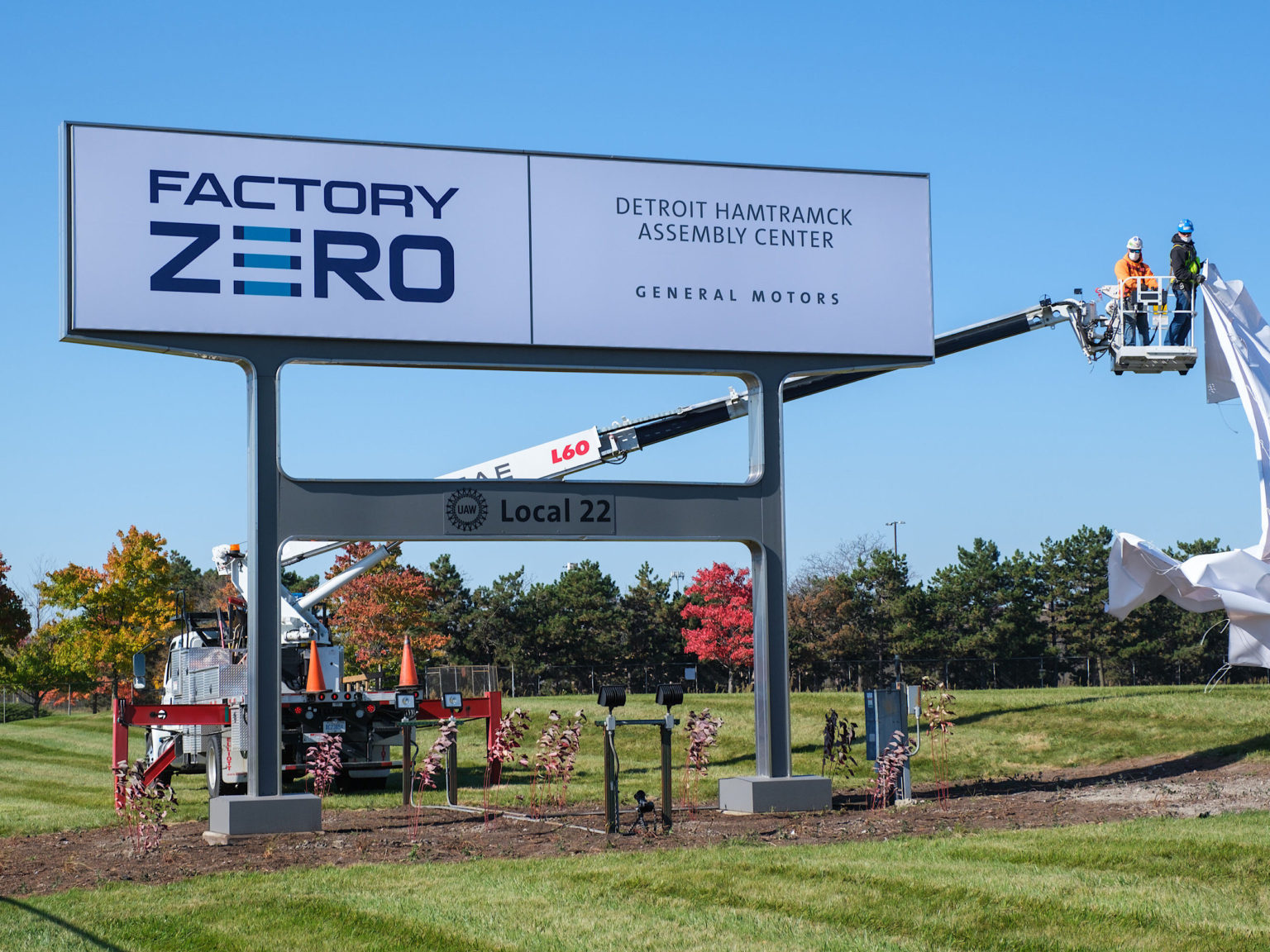The General Motors Detroit-Hamtramck Assembly Center as a long history. Located just three miles from General Motors HQ near Detroit’s historic Polish neighborhood, the plant sits on the site of the original Dodge factory. That factory was demolished in the 80s and a new Buick/Cadillac/Oldsmobile-producing plant was built. The first model off the line at the new factory was the Cadillac Eldorado in 1985.
Today, the plant is in the midst of an overhaul. The site of so much automotive history is taking a definitive step into GM’s future as the launchpad for GM’s multi-brand electric vehicle (EV) strategy. To signify the big step forward, GM has renamed the plant to something a little jazzier that’s easier to spell – Factory Zero.
Factory Zero is currently undergoing a refurbishment.Photo by Jeffrey Sauger for General Motors
When refurbishment of the plant is completed, Factory Zero will be home to the production of the Cruise Origin and GMC Hummer EV. It’s also rumored to be where the forthcoming fully-electric Cadillac Escalade EV will be built in 2024. The cost of the refurb is $2.2 billion.
“Factory ZERO is the next battleground in the EV race and will be GM’s flagship assembly plant in our journey to an all-electric future,” said Gerald Johnson, GM executive vice president of Global Manufacturing. “The electric trucks and SUVs that will be built here will help transform GM and the automotive industry.”
The factory hasn’t just gotten a name change and a retool. It has been redesigned with sustainability in mind. Its concrete waste has been repurposed to create temporary roadways. The company has recycled storm water to reduce discharge costs and offset the cost of potable water. Treated stormwater will be used in cooling towers and the fire suppression system.
GM is committed to sourcing 100 percent of its U.S. facilities with renewable energy by 2030, and all global facilities by 2040.
The Wildlife Habitat Council has recognized the 16.5-acre site as a wildlife habitat. It’s the home to species such as monarch butterflies, foxes, and turkeys.
Once fully operational, the plant will create more than 2,200 good-paying U.S. manufacturing jobs.








